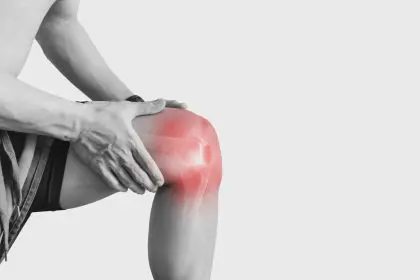Arthritis affects approximately 1 in 5 Americans over age 18, according to the Arthritis Foundation. This common condition develops when cartilage deteriorates or joints become inflamed, compromising the natural cushioning between bones. As the disease progresses, joints can swell or become difficult to move, potentially limiting everyday activities from walking to opening jars.
How arthritis begins and progresses
The foundation of healthy joint function relies on cartilage providing shock absorption between bones. When this critical tissue becomes damaged through gradual wear or inflammation, the protective cushioning diminishes. This deterioration triggers the painful cycle that characterizes arthritis.
With over 100 distinct conditions classified under the arthritis umbrella, symptoms vary widely. However, certain warning signs appear consistently across most forms of the disease. Recognizing these early indicators can lead to faster diagnosis and treatment, potentially preventing permanent joint damage.
The 5 primary types of arthritis and their symptoms
Osteoarthritis This most common form typically affects larger, weight-bearing joints such as hips, knees, and the lower back. It can also develop in the neck, fingers, and toes. Initially, osteoarthritis may affect only a single joint.
Early symptoms include:
- Soreness and stiffness, especially after periods of inactivity
- Morning joint pain that improves with movement
- Gradual onset of discomfort rather than sudden pain
- Limited range of motion that develops progressively
Osteoarthritis often begins in one joint before eventually spreading to others. The disease typically develops asymmetrically, meaning it may affect joints on one side of the body without equivalent impact on the opposite side.
Rheumatoid arthritis This autoimmune condition typically begins in the small joints of fingers and toes. Unlike osteoarthritis, rheumatoid arthritis presents symmetrically, affecting matching joints on both sides of the body simultaneously.
Distinctive characteristics include:
- Prolonged morning stiffness lasting more than an hour
- Symmetrical joint involvement
- Systemic symptoms affecting the entire body
- Potential complications including fever, shortness of breath, chest pain, and eye inflammation
The symmetrical nature of joint involvement provides an important diagnostic clue, as bilateral symptoms strongly suggest an autoimmune rather than wear-and-tear origin.
Psoriatic arthritis As another autoimmune condition, psoriatic arthritis occurs when the immune system mistakenly attacks healthy tissue. Beyond joint symptoms, this variation produces additional distinctive signs.
Key indicators include:
- Joint pain and swelling similar to other arthritic conditions
- Characteristic skin rashes often resembling psoriasis
- Eye redness and discomfort
- Nail changes including pitting or separation
- “Sausage-like” swelling of entire fingers or toes
This distinctive digit swelling, medically termed dactylitis, represents a crucial diagnostic feature that helps distinguish psoriatic arthritis from other inflammatory joint conditions.
Gout This unique form of arthritis typically targets the large joint of the big toe but can affect other joints including ankles and knees. Gout produces some of the most acutely painful arthritis flares.
Distinctive features include:
- Intensely painful attacks in individual joints
- Significant redness and swelling during flares
- Recurrent episodes affecting the same or different joints
- Potential triggering by dietary factors
Gout differs from other arthritis types through its characteristic sudden onset and extreme intensity. While flares eventually subside independently, medications can both relieve acute attacks and prevent future episodes.
Beyond these common types, numerous other arthritic conditions exist, including ankylosing spondylitis, reactive arthritis, and juvenile idiopathic arthritis. Each presents with unique symptom patterns requiring specialized treatment approaches.
Universal early warning signs across arthritis types
Regardless of the specific variation, certain early indicators appear consistently across most arthritis forms.
Pain (Arthralgia) The initial symptom typically manifests as pain that may feel like a dull ache or burning sensation. This discomfort often intensifies after joint use, such as climbing stairs or gardening. Some individuals experience increased pain with weather changes or humidity fluctuations.
Swelling As joints become painful, swelling frequently develops due to increased synovial fluid production. While this fluid normally cushions and lubricates healthy joints, excessive amounts result from inflammation in arthritic joints. The swelling causes discomfort and restricts movement range.
Stiffness Morning stiffness represents a nearly universal arthritis symptom, though its duration varies by type. Osteoarthritis typically causes brief morning stiffness, while rheumatoid arthritis produces prolonged stiffness lasting hours. This symptom often improves with movement as the day progresses.
Reduced range of motion As arthritis advances, joint flexibility diminishes gradually. Activities requiring full joint mobility become increasingly difficult, sometimes leading to functional limitations in daily activities.
Importance of early intervention
The progressive nature of arthritis makes early diagnosis and treatment crucial. Without proper intervention, joint damage can become permanent, leading to irreversible functional limitations. The subtle onset of symptoms, sometimes mistaken for normal aging or temporary soreness, can delay diagnosis.
Medical professionals recommend seeking evaluation for joint pain persisting beyond a few weeks, especially when accompanied by swelling, redness, or warmth. Early intervention with appropriate medications, physical therapy, and lifestyle modifications can significantly slow disease progression and preserve joint function.
Treatment approaches vary substantially depending on the specific arthritis type, making accurate diagnosis essential for optimal management. While no cure exists for most arthritis forms, modern therapeutic approaches can effectively control symptoms and maintain quality of life when initiated promptly.












